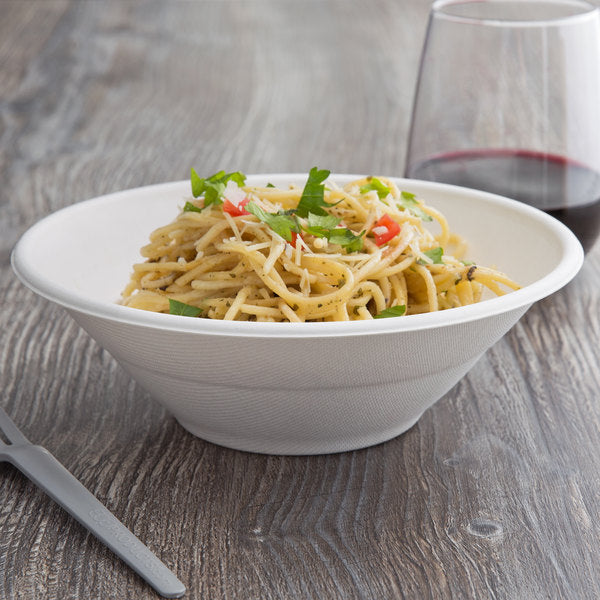Oily coffee beans often raise questions among coffee lovers. Are they a sign of high-quality beans, or do they indicate staleness? In this detailed guide, we’ll demystify everything related to oily coffee beans, their causes, how to store them, and their impact on your coffee experience.
Why Are Coffee Beans Oily?
Green coffee beans undergo a dramatic transformation when they are roasted. Complex chemical reactions will unlock the flavor, change the coffee beans' size, and turn them brown. In addition, oil can appear on the surface of the beans. These are formed either during the roast when lipids within the cellulose structure come to the surface, or after a roast when the beans are in storage. Oils on the surface of coffee beans can carry important flavor compounds and can significantly impact the mouthfeel of brewed coffee.

Where Does The Oil On Coffee Beans Come From?
Green coffee beans are full of carbohydrates, amino acids, water, caffeine, and lipids. When they are exposed to heat during a roast, each of these reacts differently, leading to a range of changes in the beans. One of the most important of these changes is the development of oils on the surface.
This happens when heat compromises the endosperm (the reproductive interior) and makes the outer layer more porous, causing oils deep inside the bean’s structure to migrate to the surface. The longer the roast goes on, the more oils appear as deeper structures in the bean break down.
That's the reason why dark-roasted coffee have a tendency to be more oily than light-roasted coffee. The beans have had more time exposed to the high temperatures inside the drum.
The Role of Oils in Coffee Beans
Flavor and Aroma:
- Essential Oils: Volatile compounds in the coffee oils contribute to the coffee's aroma and flavor. These oils contain esters, aldehydes, and ketones, which are responsible for the complex and desirable scents that we associate with freshly brewed coffee.
- Flavor Profile: The presence of oils enhances the richness and depth of coffee flavor, contributing to a full-bodied taste. They can impart nutty, fruity, or chocolatey notes, depending on the coffee variety and roasting process.
Texture and Mouthfeel:
- Smoothness: Oils add to the smooth, creamy texture of coffee. This characteristic is especially appreciated in espresso and other robust coffee preparations where mouthfeel is a critical quality attribute.
- Body: The oil content in coffee beans contributes to the overall body of the brew, making it feel heavier and more substantial in the mouth.
Crema Formation:
- Espresso Quality: In espresso, the oils are essential for forming crema, the golden layer of foam on top of an espresso shot. Crema is a sign of quality in espresso preparation and contributes to the drink's visual appeal and flavor.
How Does Oil Influence Coffee Characteristics?
Freshness and Shelf Life:
- Oxidation: Oils in coffee beans are prone to oxidation, which can lead to rancidity and off-flavors. This oxidation process is accelerated by exposure to air, light, and heat.
- Storage: Proper storage conditions (airtight containers, cool and dark environments) are crucial to preserving the oils and, by extension, the coffee’s freshness and flavor over time.

Roasting Impact:
- Development of Oils: During roasting, the heat causes oils to migrate from the interior of the bean to the surface. The degree of roast (light, medium, dark) affects the amount of oil that appears on the bean’s surface.
- Flavor Changes: Darker roasts typically have more oils on the surface, contributing to a richer, sometimes more bitter flavor profile. Lighter roasts retain more of the bean’s inherent flavors and have less visible surface oil.
Brewing Considerations:
- Extraction: The brewing method influences how oils are extracted and perceived in the final cup. Methods like French press and espresso retain more oils in the brew, while paper-filtered methods like drip coffee and pour-over can trap some of the oils, resulting in a cleaner cup.
Managing Oil Content in Coffee Beans
Quality Control in Roasting:
- Roast Profile: Roasters need to carefully manage the roast profile to optimize oil development without over-roasting, which can lead to burnt flavors and excessive oil migration.
- Cooling: Rapid cooling of the beans post-roast helps stabilize the oils and prevent excessive oxidation.
Storage Practices:
- Packaging: Using vacuum-sealed or nitrogen-flushed packaging helps preserve the oils by minimizing exposure to oxygen.
- Environmental Control: Storing coffee beans in cool, dark places can significantly extend their shelf life and maintain oil integrity.
Brewing Techniques:
- Method Selection: Choosing the right brewing method based on the desired oil content and flavor profile can enhance the coffee experience. For instance, a French press can be used to highlight the rich, oily characteristics, while a Chemex or Aeropress can produce a cleaner cup.
- Grind Size and Water Temperature: Adjusting grind size and water temperature can influence the extraction of oils, allowing for fine-tuning of the coffee's flavor and mouthfeel.
How To Dry Oily Coffee Beans
Mix With A Lighter Roast
Drying out oily coffee beans by mixing them with a lighter roast is one effective way to dry oily coffee beans. You just need to place the beans in an airtight ceramic container and give the container a good swirl to evenly distribute the oils. Over time, the lighter roast beans will absorb some of the oil from the oily dark roast beans. Resulting in a more evenly balanced level of oiliness.
Bake Them In An Oven
If you have an oven, you can spread out your oily beans onto a baking sheet and put them in the oven at a low temperature (around 200-225 degrees Fahrenheit). You need to keep a close eye on the beans as they roast. As they can go from perfectly dried to burnt in a matter of minutes. Once the coffee beans have reached your desired level of dryness, take them from the oven and allow them to cool before brewing.

Let Them Dry Out Naturally
If you have free time, you can place them in a single layer on a clean cloth or paper towel and allow them to air dry. This way may take a bit longer, but it allows you to monitor the dryness of the beans more closely and avoid the risk of burning them.
Use A Food Dehydrator
If you’re in a hurry, you can try to use a food dehydrator. First, you place the beans in a single layer on the dehydrator tray. Then the temperature to a low setting (around 140-150 degrees Fahrenheit). Make sure that you keep a close eye on the beans as they dehydrate to avoid burning them.
Which Method Should Not Be Used To Dry Coffee Beans?
Never rinse coffee beans under a skink or pat them dry with paper towels. Because this method will remove many of the delicious flavors as well as aroma in coffee beans. Making coffee brewed tastes watery or hollow.
FAQs About Oily Coffee Beans
Are Oily Coffee Beans Bad For Grinder?
Yes, oily coffee beans can be bad for grinders. The oils can accumulate inside the grinder, clogging the burrs and affecting performance. Over time, this buildup can lead to a stuck grinder and require more frequent cleaning.
Are Oily Coffee Beans Bad?
Oily coffee beans aren’t necessarily bad, but they indicate dark roasting and can affect the taste, making it more bitter. Additionally, they might cause issues with coffee machines, especially grinders and espresso machines.
Are Oily Coffee Beans a Sign Of Quality?
Not necessarily. Oil on beans is often linked to darker roast levels rather than quality. However, stale coffee can also appear oily if stored improperly.
Can Oily Coffee Beans Go Bad?
Yes, overly oily beans can go rancid if not stored correctly. It’s crucial to keep them in airtight containers and away from light and air.
Do Oily Beans Make Better Espresso?
Some baristas prefer oily beans for espresso as they contribute to a creamier texture. However, be cautious as oily beans can clog espresso machines.
How to Avoid Oily Coffee Beans?
Choose light to medium roasts as they are less likely to be oily than dark roasts. Storing beans in an airtight container away from heat and light can also help slow the development of oils on the surface.
What is Non-oily Coffee Beans?
Light and medium roast beans are generally non-oily because the roasting process hasn’t drawn the oils to the surface. These beans typically offer more bright, fruity, or floral flavors compared to the smoky, robust taste of dark roasts.
Conclusion
Oils in coffee beans are fundamental to the sensory qualities of coffee, influencing its flavor, aroma, and texture. Managing these oils through careful roasting, proper storage, and appropriate brewing techniques is essential for optimizing coffee quality.
Related Articles:







